All posts by Long Zheng
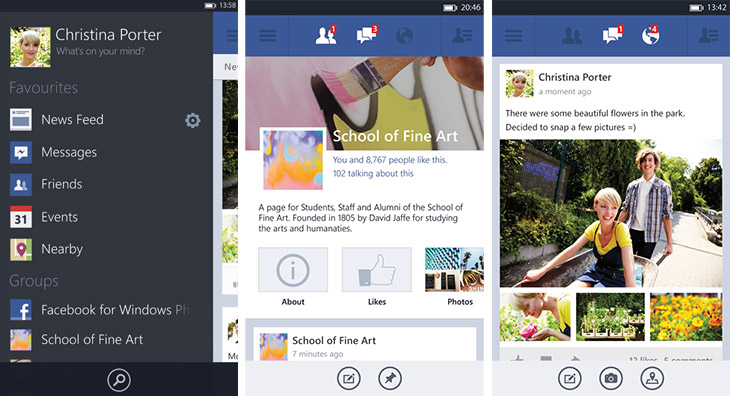
[tl;dr] Facebook for Windows Phone breaks out of its Metro shell
The Windows Phone team today announced on its blog that they public a beta version of the Facebook Windows Phone app to test with users new features (and a new user interface) before rolling it out to the general public.
- The new UI makes a departure from the traditional Windows Phone panoramic & pivot controls to more traditional page navigation structures found on iOS and Android.
- The app is much more aligned with the current Facebook iOS and Android apps, using the slide-out sidebar mechanisms on the left and right side for navigation and chat list respectively, and even pull-to-refresh!
- Having said that, the visual styling is still heavily Metro-inspired with the iconic flat icons, Segoe UI and appbar control.
- It also seems to bring feature-parity to the Windows Phone app which has long been lacking in minor but sometimes useful features. (Previously it was necessary to use web touch.facebook.com in some cases)
- I believe This hybrid “ported-UI” and Metro is a better balance of functionality and Metro-ness than the previous version.
- There are still missing features that isn’t iOS-parity, for example the ability to tag friends in comments by typing their name.
- I think for well-established brands & apps like Facebook, “ported-UIs” will make it much easier for these companies to deliver and maintain feature-parity apps on the Windows Phone platform. A completely unique Metro experience puts a lot of burden on design and engineering that is consistently hard to justify at a cost-basis in relations to market share.
- International users won’t be able to download the US version but by simply changing the URL (ex. en-US to en-AU) you should be able to download it in different regions.
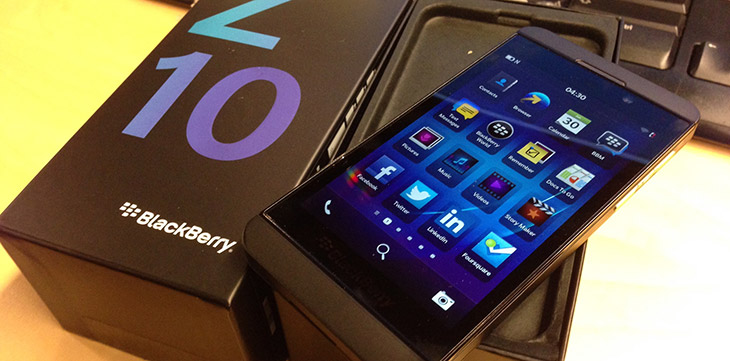
[tl;dr] Hands on with BlackBerry Z10
I never quite understood what a BlackBerry was suppose to be, especially after the smartphone revolution. For the past few weeks, I’ve been playing with a BlackBerry Z10 and it has only left me more puzzled where BlackBerry sits in a world of much more capable devices and platforms.
- The Z10 device is well-built, solid and sturdy device but it doesn’t look too different from a typical smartphone, albeit big but not heavy. The rubberised back cover is one of the best backsides of a smartphone to hold, texture is extremely comfortable to hold and grip.
- You can swipe on the “off” screen to resume from standby which is very cool, since the power button is awkward to locate and press at the top. You can also press-and-hold while swiping to “peek” at the notifications and calendar, then swipe down turn the screen off.
- The 8MP camera is decent and on-par with most modern smartphones. Inclusion of NFC is very interesting, but there’s very minimal integration of sharing and receiving NFC tags. Built-in mini-HDMI output is very interesting, maybe great for presentations but I don’t think it’s that practical (e.g. AirPlay is much more practical).
- BlackBerry 10 on the surface feels like a generic mix iPhone, Android and webOS in a bowl. It’s not too radically different like Windows Phone.
- The lack of a hardware button for a gesture-only UI (swipe from bottom for home screen) is tough to get into, but simple enough to get used to. It took me awhile to realize that swiping from top inside apps opened their menus/settings.
- The quick settings panel (swipe from top from home screen) with easy access to toggle rotation lock, 3G/WiFi wireless, alarm, sound settings is very handy. (Windows Phone needs this.)
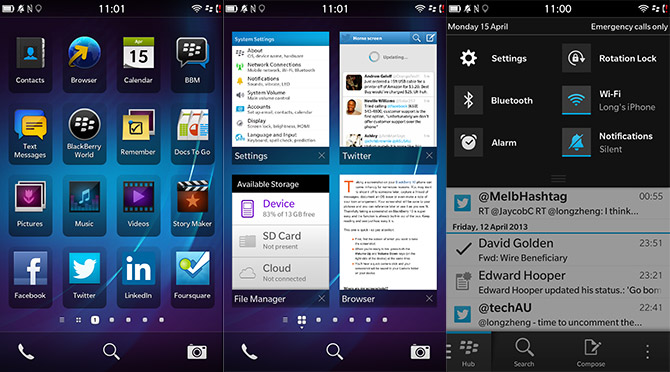

- The “BlackBerry Hub” is extremely powerful for email, messaging and social elites. It brings together all the messages and notifications into one easy view. It’s like the Windows Phone “Me” tile on steroids.
- The ability to use a gesture to “peek” or switch to the BlackBerry Hub (swipe from bottom then right) is a great use of gesture to do something a hardware button cannot.
- The app switcher has an interesting use of tiles where apps can opt to display a special view instead of just the screenshot (similar to Windows Phone tiles).
- The UI is decently styled but not buttery smooth. Like Android, it has responsiveness issues from time to time and doesn’t feel snappy.
- Most of the inbox apps (browser, calendar, maps, etc.) are well polished and functional. Third party apps vary in quality, and like Windows Phone apps, feel like second class citizens. Having said that, even Facebook and Twitter are much closer than their iOS/Android counterparts than WP.
- Confusingly, some apps are actually Android apps emulated, complete with the Android UI controls. In theory this should make it a no-brainer for Android developers to put their apps on the BlackBerry World store.
- The software keyboard is responsive and fast. The buttons are decently sized and error correction effective enough. The word-suggest feature is somewhat gimmicky and I couldn’t find it useful enough to replace traditional touch typing.
- There’s built-in document viewing and editing support which claims to be feature-parity with Microsoft Office Word/Excel/Powerpoint.
- Overall, I feel like this is a nice phone and a good attempt at a new touch mobile operating system. There’s some neat features that makes emails and messaging easily accessible, but that’s not enough to make the platform beat iPhone, Android or even Windows Phone.
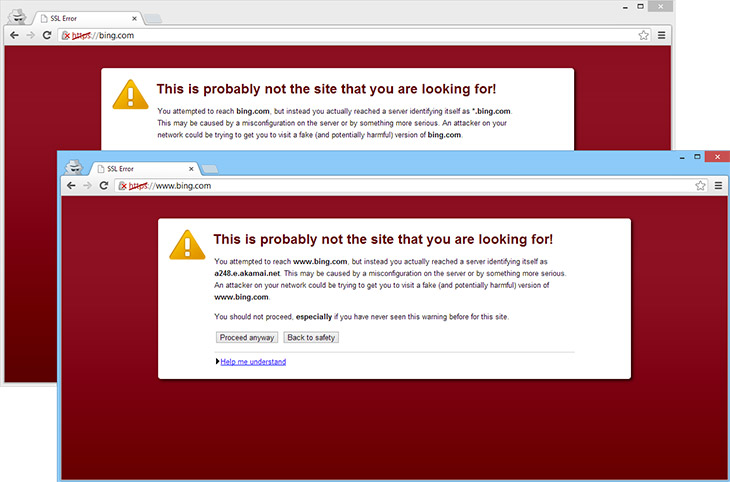
Dear Bing, please fix your SSL certificates
The https://bing.com has a wildcard certificate that does not include the non-www domain. https://www.bing.com has a certificate for Akamai.
Apparently this has been affecting Bing for at least two hours now. This is pretty embarrassing that the Google-killer would misconfigured their SSL certificates. I guess not enough people use SSL search on Bing to warrant a critical response? Of course non-SSL Bing is unaffected. In contrast Google.com has had SSL by default since 2011.
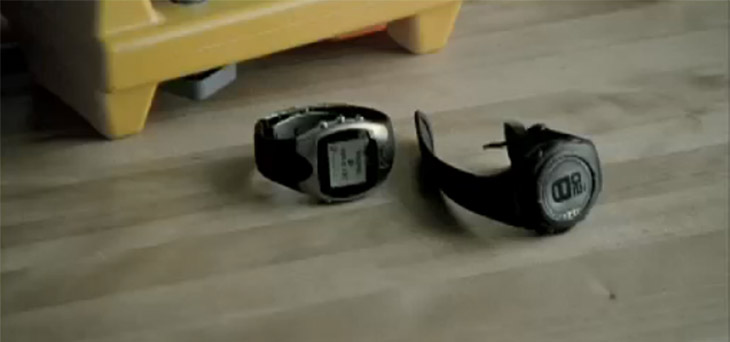
[tl;dr] The Microsoft Research projects that could make a Microsoft Watch awesome
- The Wall Street Journal reported today that Microsoft is working on a touch-enabled watch device.
- This follows rumors Apple and other companies are getting into the wearable computing trend.
- Microsoft’s previous SPOT FM-subscription smart watch attempt was technically innovative but faced adoption and market challenges. Cancelled in 2008.
- I really hope some technology transfer from Microsoft Research’s Computational User Experiences group will show up in this rumored product.
- Skinput (video below) – using an armband it measured vibrations through the skin to “sense” touch interactions on the arm. I wonder if the same effect can be achieved with the wrist strap of a watch.
- Muscle-Computer Interfaces (muCIs) – sensing muscular activity in the arm and fingers using a strap-like device. Similar to the previous, if it could sense through the watch strap, then could enable much more fine grain control by just moving fingers.
- PocketTouch – capacitive touch input through fabrics. Although I don’t imagine a watch being covered by a long sleeve shirt for the most part, it would be handy to be able to interact with it through the fabric.

Did the cancellation of Microsoft Courier demotivate 200 employees?
“Predictably Irrational” is one of my favorite non-fiction books and it’s author Dan Ariely, an esteemed behavioral economist, recently gave a TEDx presentation about the motivations of work beyond just money. Although the presentation itself holds a lot of merit, I want to draw attention to his interesting story of an unnamed “big software company in Seattle”.
Due to the timing, location and scale of the operation described, I believe the story to be of the infamous Microsoft “Courier” skunkworks project which was officially confirmed and cancelled in 2010.
According to Dan, he visited the team a week after the CEO, presumably Steve Ballmer, cancelled the project and shared this behind-the-scenes insight of that team’s dampened spirits.
The story starts at 7min46sec into the video (embedded below for your convinience)
…I went to talk to a big software company in Seattle. I can’t tell you who they were, but they were a big company in Seattle. And this was a group within this software company that was put in a different building. And they asked them to innovate and create the next big product for this company. And the week before I showed up, the CEO of this big software company went to that group, 200 engineers, and canceled the project. And I stood there in front of 200 of the most depressed people I’ve ever talked to.
If the project was indeed the Courier, then the abrupt cancellation appears to have had a huge impact on the team of 200 that is claimed to have worked on the project. Employees later showed up to work later, went home earlier and even splurged more at the company’s expense.
Of course Dan also has some informal advice for the CEO,
…And I think the CEO basically did not understand the importance of meaning. If the CEO, just like our participants, thought the essence of meaning is unimportant, then he [wouldn’t] care. And he would tell them, “At the moment I directed you in this way, and now that I am directing you in this way, everything will be okay.” But if you understood how important meaning is, then you would figure out that it’s actually important to spend some time, energy and effort in getting people to care more about what they’re doing.